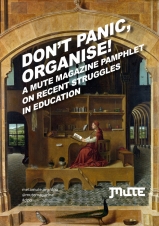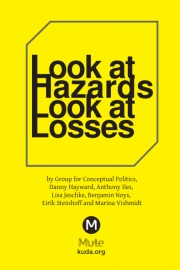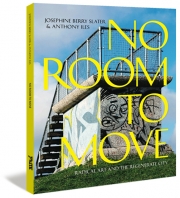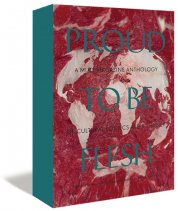Open Access All Areas: an Interview with James Wallbank
From an early interest in recycling ‘obsolete’ computers, James Wallbank’s mission to demystify the black box of technology has grown into a desire to ‘open source’ creativity in general and media in specific. Here he talks to Charlotte Frost about Access Space, a community media space he co-founded and runs in Sheffield, and their travelling Grow Your Own Media Lab project
CF: Access Space has been around for over five years now; what was your original idea when you set up the organisation?
JW: Over six years actually, we opened to the public in April 2000. The original idea was very simple, myself and my friends had set up a group called Redundant Technology Initiative and the idea behind that was that we would be the people who would be creative with technology that costs nothing. At the time, as poor unemployed artists, we perceived that our main problem was access to technology; we simply didn’t have enough money to buy new computers and we thought that was the number one problem that we needed to solve. Eighteen months later I was sitting in a warehouse, in which I’d scrounged some temporary occupation, with two and half thousand computers and I was wondering what on earth we were going to do with them, and what I realised, embarrassingly, was that as an arts group our problem wasn’t access to technology, our real problem was access to creativity!
Access Space was simply the answer to that question. It was the simple guerilla tactic: use your weakness as your strength. So we’ve made Access Space as an open access space, and our proposition to everyone that comes in is ‘you tell us how to be creative with all these fantastic resources, you tell us how to be creative with trash technology and open source software’ because frankly, we’re fresh out of ideas!
 Image: PingDom, (a live electronica jam using Net P.D. organised by Joe Stojsic, a.k.a. SQGL), at Access Space
Image: PingDom, (a live electronica jam using Net P.D. organised by Joe Stojsic, a.k.a. SQGL), at Access Space
CF: We are sitting in Access Space now, can you just describe for me the physical set-up of the media lab and the structure of the organisation itself?JW: An important thing to remember is that although RTI (Redundant Technology Initiative) started up Access Space, Access Space is now a registered charity in its own right, called Access Space Network Limited (we had to call it that because there is a self-storage company called Access Space and I think they must be really annoyed with us because if you Google ‘Access Space’, um, well, you won’t find them!), while RTI is exclusively doing exhibitions, arts events and trash technology research behind the scenes.
Access Space therefore is entirely to do with the public; it is the public element of our activities. The space itself is 1100 square feet in the city centre of Sheffield – we have street level access, literally anyone can walk or wheel their way in. Most of the activities take place in one room, we are here in the corner of office area (a strange triangular space) but the main area encompasses technology workshop, a coffee area, 15 or so work stations where participants can come and do what ever they want, there is exhibition space on the walls, and all these things happen in the space at the same time.
 Image: Simon Blackmore's Light Night event at Access Space
Image: Simon Blackmore's Light Night event at Access Space
CF: Can you describe some of the projects you’ve produced at Access Space?
JW: That’s a huge question. We have had participants create about 18 thousand documents online spread over about 250 virtual servers, so we are not exactly keeping up to date with everything participants have produced, but to take some quick examples:
One of my favourite projects has been Harriet Lowe’s Doan, which is a web comic. A single frame constitutes each episode and you click through it to get to the next one. There are now more than 400 episodes and it’s a very strange and surreal experience. Harriet has now raised a small grant to help her have a physical exhibition, which was put on here and we are hoping it will soon be touring to other places.
Meanwhile, um, who is in the space at the moment [he looks around]? We’ve got Tony Dawson working on Blender, which is 3D rendering software. He’s got a high level of expertise with the software and is working with film production. Steve Withington who collaborates with Carlos Barcode and the Monkey Collective and has also started his own web design business. His works are very difficult to define, for example the Rat Cheese website – its hard to tell if they are a joke, a straight website or a proto-business model.
And at the moment we have Simon Blackmore’s Player Printer on display in the space. Player Printer is a fully functioning music player which has been made from a printer and a series of LEDs and what happens is that you feed a piece of paper through the mechanism and holes in the paper are picked-up by light detectors, which is processed by a midi-chip and you end up with the space being filled with techno-electro music – and you can create your own tracks with a hole punch! This work is interesting and appropriate for Access Space in two ways: one because he has used trash technology in a really interesting way, and two, because he has done it here in a workshop with participants helping to create the artwork and learn skills about programming. That is to say that he has not been a showman or magician and whisked away a curtain, presented an artwork, and then quickly closed the curtain again before anyone could work out how it is done, but rather he has absolutely demonstrated how the thing is done and made it possible for other people to do it too. And we think that this is much, much cleverer!
 Image: James Wallbank, Future Archaeology (from the group show 20x20 in which participants could make work on any theme as long as it was 20 inches square)
Image: James Wallbank, Future Archaeology (from the group show 20x20 in which participants could make work on any theme as long as it was 20 inches square)
CF: Access Space is known for using recycled computers and FOSS, and you boast being Europe’s longest running free media lab…
JW: I hope its not a boast, we are not quite sure. We have been tentatively saying for a long time that we believe that we are the longest running, continuously open media lab of our type, and we haven’t had other people say they’ve been running for longer, but we’d love to hear if they have! We would love to hear if there is another media lab which has managed to keep its doors open in such a way that anyone can walk in off the street, today, and take part, because we think this level of open access is a pretty tough thing to achieve. I think the jargon is ‘self referral’, in other words a person can say ‘can I take part, because I feel like it?’, without having to be a member of a specialist group, without having to be referred by an employment service, without being on a school work-placement or part of a particular target audience we are funded to serve. Here, by just walking in the door, you qualify. That type of open access is a very difficult thing to sustain and we don’t believe there are other projects which have managed to do that over this long a period.
CF: …do you think that using these low-cost/no-cost soft and hardwares demystifies technology for your users?
JW: Absolutely! Lets face it, it doesn’t matter if you break it, there’s plenty more where that came from! We are able to allow participants to install new software, open up the cases of the machines and put more memory in or replace broken components i.e. upgrade them in all sorts of ways, and really get to grips with what the technology is and how it works. Many media labs that use expensive new technology have to lock down the technology, you can’t install software, you are monitored for viruses, you sometimes can’t even bring in any type of removable media so you can’t even save to disk! What?! Every participant here has their own secure (er, we hope) desktop where they can save work, bring in their own media, USB sticks, CDs, DVDs. We are able to be a lot more open and a lot less precious with technology. You can even build your own machine and take it away and we really encourage people to do this! At most media labs that would be entirely out of the question, but it makes it so much more accessible and so much more useful.
 Image: Harriet Lowe, Untitled, (from the show 20x20)
Image: Harriet Lowe, Untitled, (from the show 20x20)
If you go to a high tech media lab and learn how to use £5000 worth of fancy software running on a £2,500 power Mac G13 (pick your own number if you like, but whatever number is written into this article now, anyone reading this article in two years time will feel that it is laughably antiquated). If you learn in a media lab which is that sort of environment, maybe you can learn the jargon and the industry standard tools for tomorrow, but then you will just go home and cry – unless you’ve got a spare £7000 to invest in your own creativity! It’s our proposition that it’s much better to be creative with a system of technology that you control, that you can afford and that you can continuously upgrade from now until forever. It’s much better to be in control of the situation than it is to learn something in the abstract, with someone else’s gear and someone else’s software.
CF: Another way in which you are attempting to redistribute expertise is through the Grow Your Own Media Lab initiative. Can you briefly explain what that is?
JW: Access Space has been open for 6 and a half years and has kept going on a pretty low budget, particularly compared to other organisations which provide a similar level of media arts learning and participation, and we think that we’ve got a pretty robust model for IT learning in the future, for participation and production, and for building community. Grow Your Own Media Lab, therefore, is about going to other organisations across the UK and helping them to adopt this community-orientated, free open source software, using any available computers, but crucially, it is also about helping them see the participants in the space as the main body of knowledge. At Access Space we don’t propose that when people come in the door we’ll simply teach them how to use FOSS, actually, we are asking people to come in the door and teach us and indeed each other how to use it. Of course we give them orientation and find out what sort of things they are interested in producing, but then we say that they can ask anyone else in the space for help, and that they will be happy to help if they can, but the catch, or, if you like, the way we are asking people to pay, is by saying that when people ask you for help, if you can, you must.
This is a model that solves a lot of problems, but it also flies in the face of all sorts of current understanding about how people learn. Typically, in schools, people understand learning as being about teachers teaching passive students. It is an idea where there is only one-way information transfer. We believe there in a two-way information transfer. We are not talking about ‘community learning’, which is a phrase which conjures up the idea of ‘let’s teach the poor dears to read’, but rather we are talking about a learning community. Again, school IT departments, for example, are often pervaded by a sense of fear. This fear comes from the fact that the person at the front of the room who is supposed to be handing down his or her wisdom to the pupils is often aware that they, in fact, know much less about technology than the pupils. What we are also doing, therefore, is proposing that we get rid of the most expensive and often least effective component of this situation: the teacher! Therefore, Grow Your Own Media Lab is about us working with organisations not just to teach them about how to use a particular type of software – that’s only a minor part of the issue – the main part is that we will help them to understand how their participants can act as the engine of the whole process.

CF: Can you describe some of the organisations currently involved in Grow Your Own Media Lab and how they are currently getting on with the tools on offer?JW: Grow Your Own Media Lab has primarily involved with the Polytechnic in Newcastle Upon Tyne, Folly in Lancaster, and Mongrel and the Media Shed in Southend on Sea – who are one of the most successful instances of Grow Your Own Media Lab thus far. They have gone from being a small group of artists working entirely on a project-by-project basis, to establishing the media lab which involves a whole load of volunteers from the local area providing themselves with an accessible media space a pretty continuous basis. The space is open 3 days a week without any budget whatsoever, just simply through the participants themselves, and we are delighted that Mongrel have really understood the way the model can work.
There is also, Radius in Glasgow, who have set up a shop with acts as a Green community advice centre, and they also have a media lab where participants can come and do all sorts of creative things. And we are involved with the Birmingham-based A2RT (Access to Recycled Technology), Animation Station in Banbury and soon we will be working with Lighthouse in Brighton. Oh and an interesting new involvement is with Coupland Borough Council and the arts group CA15 in Cumbria. They are in the interesting and difficult situation of being in a fairly remote, post-industrial town where there are lots of disengaged kids. There have been a lot of problems with how the local agencies understand the role of the arts or how to engage those kids and we are involved in what you might call ‘capacity building’, in other words, training the trainers to understand this model. We have a lot of positive feelings about CA15 and about what is going to come out of their work in this area.CF: Quite a lot of the organisations you have been mentioning are arts organisations and GYOML is funded by the Arts Council of England; what makes it primarily an arts based project?
JW: Right from the start we conceived of Access Space as being about being creative with technology and not simply learning things for any practical purpose. We don’t propose to do things like run series of workshops on using Office software so participants can go and get a tedious, dull job in an office which perhaps they don’t want. Instead, we are using the arts as an engine for inspiration, for turning people on to what is exciting about technology.
I think – this is where we get into a bit of philosophy – our society involves a huge level of passivity. There is this idea that people are being asked to engage with the media (film, television, entertainment, music, writing etc) in an entirely passive way: listen to the music, watch the telly, go see a film. They are not invited to be active and create their own music, their own films, build their own websites, write their own articles. So I think that if you want one big mission for the arts, it should be to engage people in starting to be productive for themselves. It’s about realising that culture isn’t something you receive, it’s something you build!
On a more practical level, (if that is the philosophy of it), as people come into Access Space there is one thing that we cannot provide them with and that is the motivation to get stuck in. We say ‘look we are not going to tell you what you need to know about technology, just tell us what you are into and what you are interested in’, and when you says this, the response, almost universally, is the desire to do something creative. They want to make pictures, they want to make some sounds, they want to write. We have found that the arts are something which people are automatically attracted to, and we are saying ‘do it!’.
CF: Would you say then that there is an idea or category of ‘un-art’ or ‘non-art’ that is of equal importance to Access Space?
JW: It’s clear that some of the work produced through Access Space is art – it is self-declaredly art – but some of the work is highly creative, certainly artistic, but not necessarily art. Some of it probably isn’t art, but it is still constructive, creative, engaging and, importantly, a catalyst for learning. So we seem to have got this kind of greyscale between the art and the non-art (and I’m not sure whether the art is black or white by the way) and we at Access Space don’t think it is a helpful activity to draw a line at some point along that greyscale and say all these things this side of that line are sacred and special art and all the things the other side of the line aren’t. It isn’t appropriate or useful.CF: I get the impression that you are keen to avoid putting things into categories that are counter-productive and that that helps you avoid being lumped together with some sort of ‘artistic elite’ or pigeon-holing the work that’s being produced through Access Space. But I’m interested in whether you perceive there to be some sort of ‘techno elite’ surrounding the use of FOSS and whether you think there are groups or individuals, (who rely quite heavily on jargon and are quite careerist with their objectives), whose work may not sit well with what you are trying to do?JW: I don’t want to be critical of people, everyone’s got their own life to lead and everyone’s doing their own activities, but some people – you know who you are – act like laptop warriors, with their fancy connections and great technology, zooming around different digital arts festivals and participating in some kind of cyber-elite – and good luck to them – but they shouldn’t kid themselves that they are going to generate huge social effects or even engage deeply with society. Their work is a small peripheral activity, and I am much more ambitious for art than that. I really think that creativity can transform people’s lives and transform society, and whilst there are some people who are open source in the way they want to use software, they are often very closed source in terms of expertise and that’s just not what we’re about!
Access Space: http://access-space.org/Grow Your Own Media: http://gyoml.access-space.net
Mute Books Orders
For Mute Books distribution contact Anagram Books
contact@anagrambooks.com
For online purchases visit anagrambooks.com






